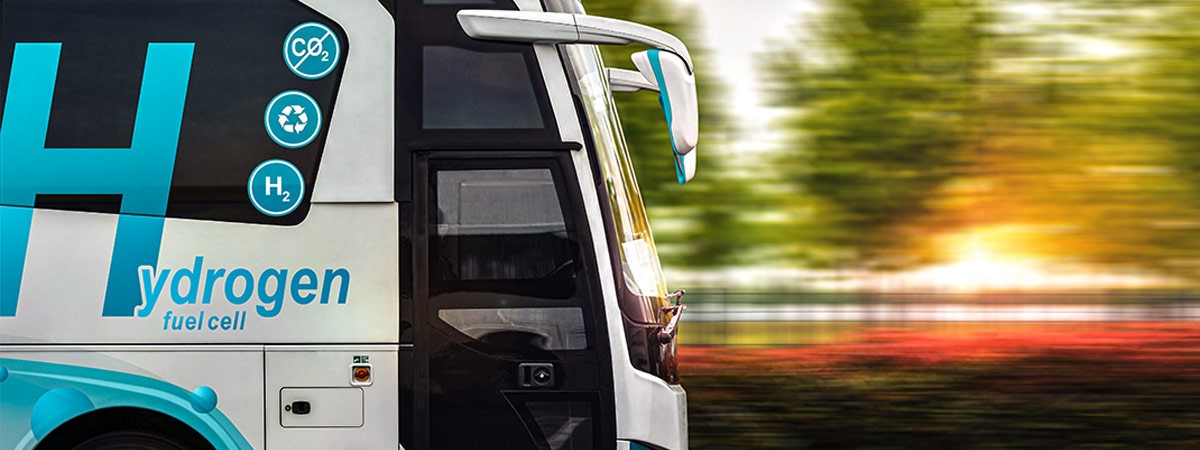With an estimated 2 billion combustion engine vehicles on the world’s roads, changing the fuel source of transportation would be a big step in the battle against climate change. The development of hydrogen fuel cells means we can now harness hydrogen as a clean, green means of powering equipment big and small – including making public transport an even more eco-friendly way to get around. Many cities are now embracing this new technology and introducing hydrogen-powered buses to their fleet, turning what once was a distant dream into reality.
An all-purpose power source
Hydrogen fuel cells are extremely versatile. Although each cell produces only a small amount of electricity, by combining them, they can be used to power virtually anything: a computer, a train, a local power plant – and they even provide auxiliary power on many spacecraft. In vehicles, they offer several advantages over fossil fuels. Compared to a standard combustion engine, the conversion of fuel to energy is much higher. And unlike fossil fuels, hydrogen fuel cells are very clean. They produce only electricity, heat, and water, resulting in emission-free transport.To power a hydrogen bus, a combination of fuel cells and batteries is used. Pure hydrogen gas is pumped into storage cylinders in much the same way as refueling a conventional car with petrol. The electricity the fuel cell generates charges the vehicle’s battery packs. These batteries store electricity for an extra boost when it is needed, such as sharp acceleration, or going up a steep hill.
Round the circuit
A hydrogen fuel cell consists of three basic parts: two electrodes and an electrolyte membrane. Hydrogen is injected at the negative electrode. Each atom separates into protons and electrons, which take different paths to the positive electrode. The electrons create the flow of electricity around a circuit, while the protons pass through the electrolyte membrane. There, they recombine, then bond with the oxygen in the air to create water and heat.To avoid any oxygen creeping over to the negative electrode and meeting the hydrogen too early in the process, excess hydrogen is injected into the circuit. This surplus must therefore be removed again. Simply releasing it would be inefficient and could create an explosive atmosphere around the fuel cell. To close the loop, a special compressor from Busch recirculates the hydrogen. It collects the excess hydrogen atoms at the positive electrode and diverts them back to the beginning of the process. There, they begin their journey again, splitting and recombining until they eventually leave the process as water.
